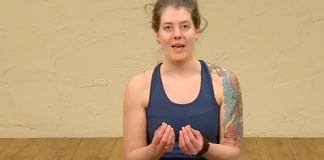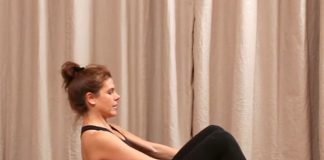In this age of electronics we are bombarded with stimuli throughout our waking hours. While our mind is being stimulated with sound bites, our body is sedentary. Whether good or bad, the mind has to constantly deal with this stimuli. After some time the mind begins to crave this stimuli even during quiet moments, which causes us to browse for information just to feed that need, and this in turn becomes a vicious cycle. Even though the mind is stimulated, our time is largely spent being sedentary. A good cardio workout energizes the body, but the mind might still need something more to quiet down.
Yoga is known to relax the body and calm the mind. One type of yoga that specifically aids with quieting down of the mind is “Yin Yoga”. Yin Yoga is based on the Taoist concept of yin and yang, where opposites naturally exist in nature and in our body, as in -light and darkness, male and female etc. Yin is associated to water, earth, moon, femininity and night. Yang is associated with fire, sun, masculinity and daytime. Yin is the stable and unmoving while yang is dynamic and constantly changing. Translating that to the parts of the body, yin corresponds to the connective tissue (fascia, ligaments), and yang to the pliable muscles.
Yin Yoga is not a new practice but has his roots in ancient yoga practice. This yoga style was introduced in the West in the late 1970’s by Paulie Zink, a martial arts champion and Taoist Yoga teacher. He created ‘Yin and Yang’ yoga classes, combining asanas and disciplines from Hatha Yoga, Taoist Yoga and other disciplines he developed himself.
Hatha Yoga is a combination of Yin and Yang and its main purpose is learning to control the mind by controlling the body. Yin Yoga however only tries to relax and cool down and does not include Yang. The purpose is to relax completely into the pose by holding it for long periods of time ranging from 3 to 5 minutes or longer. Holding the pose for a longer time stretches the deeper body tissues such as the tendons, fascia, ligaments and other connective tissues. This increases overall flexibility and improve circulation in the joints and other tissues.
Yin yoga uses specific asana sequences to stimulate particular energy channels or nadis. The focus of the practice is inwards and meditative. While the poses are being held the teacher can also choose to guide the students into an even deeper meditative state by giving ‘Dharma talks’ or monologues about the body, the poses, the nadis, or share stories of their own experience.
Holding a pose for a long period of time also creates the space for emotions (anxiety, sadness, anger, happiness) to surface. A yin yoga teacher encourages the students to allow those feelings to surface, but not to identify with them. It costs a lot of energy for the body and mind to store these pent up emotions. As the mind get cleaned and purified the corresponding blockages in the body are also released. Essentially these poses become a catalyst for the release of suppressed emotions, and the practitioner begins to experience a sense of freedom.
Some of the benefits of Yin yoga are:
- Alleviates stress.
- Relaxes the body.
- Calms the mind.
- Stretches and activates the joints and ligaments.
- Improves stamina.
- Better lubrication and protection of joints.
- Enhances one’s ability to sit for meditation.
- Enhances the yang practices.
Watch this video to learn more about Yin Yoga practice.
47 Most Famous Motivational Quotes of All-Time
49 Greatest Love Quotes
37 Inspirational Quotes that Will Change Your Life
































